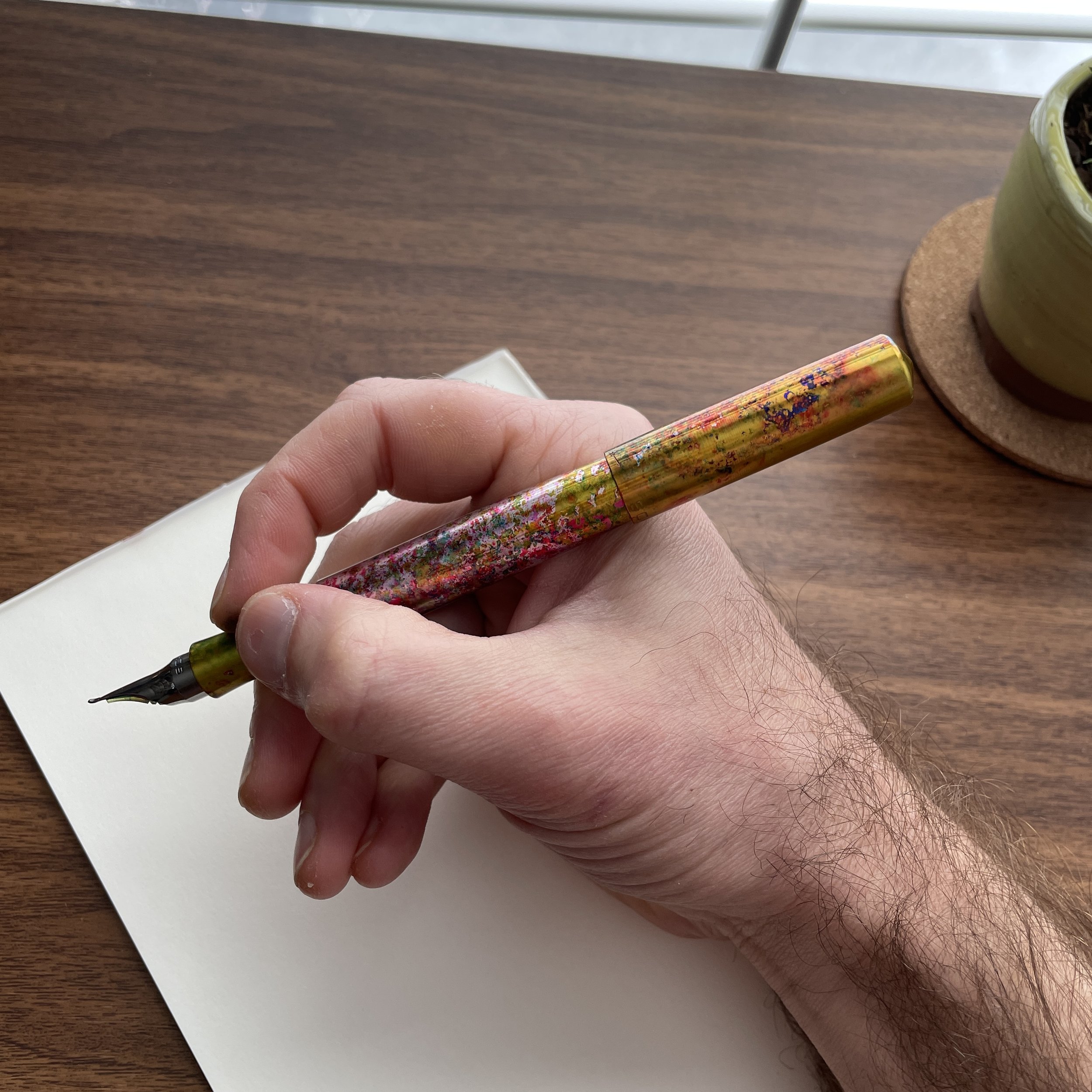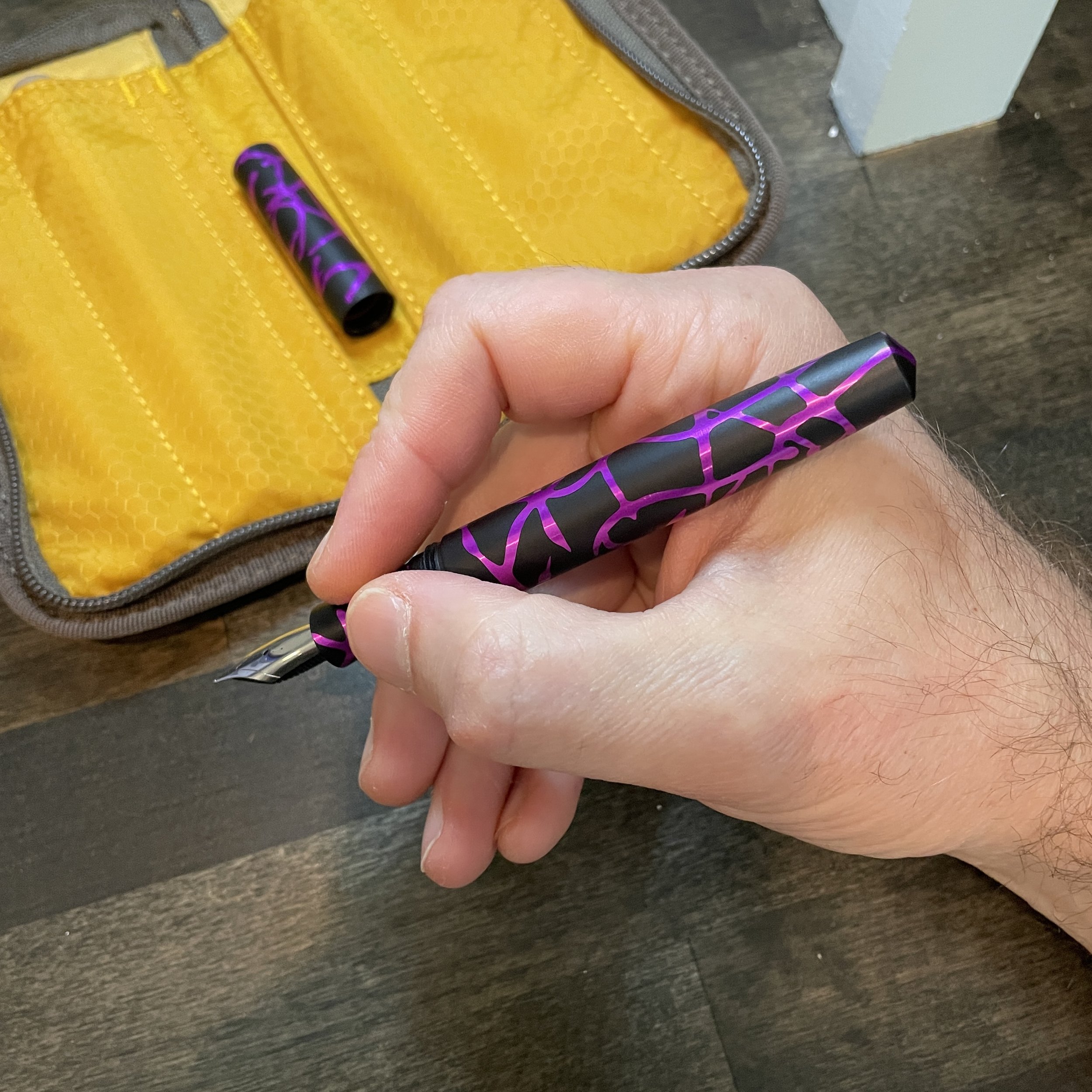Back in January, I wrote a piece in the “Workhorse Pens” series that I had been thinking on for quite some time, titled the “Considerations and Pitfalls of High-Capacity Pocket Fountain Pens.” The specific focus of that article was what I refer to as “pocket ink tanks,” namely high-ink-capacity pocket pens with either a piston, vacuum, or eyedropper filling system. While it can be extraordinarily convenient for those of us who do a lot of writing to carry a full 4ml of ink around in our pocket - and some of these pens do indeed seemingly write forever - there are all sorts of caveats that you need to consider in order to avoid a pocket ink-splosion.
Yes, pocket pen converters do exist! Kaweco (left) and Sailor (right).
But what about pocket fountain pens that use a standard ink cartridge-converter filling system? Are they any “safer”, and to what extent are they subject to the same risks and considerations as the so-called ink tanks? The short answer is that cartridge-converter pocket pens are fairly low-maintenance and easy to use, but still require some attention in order to ensure an enjoyable writing experience. A few thoughts and observations:
Because cartridge-converter pens hold less ink, there’s proportionately less risk of a mess, but still a risk of a mess. Trust me, if a fountain pen ink cartridge explodes, it will cause a big mess. (Especially if you put it through the washing machine.) But it’s not 4ml worth of mess, and the ink is doubly contained, both within the cartridge, and then again within the barrel of the pen. If your pocket fountain pen has o-rings set into the cap and barrel threads, you’re even less likely to ruin your bag or clothing provided you’re always careful when uncapping the pen after travel.
Cartridge-converter pocket pens are less prone to burping and leaking into the cap. Because the ink is held inside the cartridge or converter, which in turn is inside the barrel, it’s more insulated from temperature fluctuations, which can cause “burping” - i.e., what happens when warming ink expands and gets pushed out of the nib and feed. There’s no way to eliminate the risk entirely, especially if you carry a fountain pen in your pants pocket, but I’ve had much less trouble with cartridge-converter pens than those that use the barrel itself as the ink reservoir.
Be mindful of condensation in the cap and the pen getting jostled around. No matter how careful you are, you can’t outsmart the laws of physics and thermodynamics. If you carry a fountain pen in your pocket, it’s really just a plastic or metal tube of ink that writes via a “controlled leak” through the nib and feed. If the pen gets bumped, or you’re particularly active, a drop or two of ink might leak out into the cap or onto the nib. If the pen warms up in your pocket, you might see some inky condensation on the nib. There’s no avoiding these things, so no matter what kind of pocket fountain pen you are using, use some caution when you uncap it for the first time to avoid getting any stray drops onto your clothes, desk, bag, etc.
The nib on the Sailor Pro Gear Mini Sapporo - you can see some dried ink that leaked out onto the nib when I was carrying it on my Plotter Mini 5 in my pocket on an airplane. It’s minimal, to be sure, and there was no real mess, but it’s a factor to consider.
A Few Examples of Low-Maintenance Pocket Fountain Pens
I pocket carry fountain pens all the time, both cartridge-converter pens as well as the pocket ink tanks. I generally won’t hesitate to carry any of my more compact fountain pens in my pocket as long as I’m conscious of not doubling up with keys, knives, etc. Of course, the quintessential cartridge-converter pocket fountain pen is the Kaweco Sport, which has a low barrier to entry and ease-of-use, as well as tons of different materials and finishes to choose from. Honestly, if you hear the term “pocket fountain pen,” most people immediately think of the Sport, to the degree that pen has almost become synonymous with the product category.
Two-toned grey? Sign me up.
It’s not the only option, however. A favorite of mine - though at a higher price point - is the Schon DSGN Pocket 6, which comes in a wild array of finishes, is compatible with Ian Schon’s in-house Monoc Nib, and features durable metal construction (complete with o-rings to protect against leaks). I’ve also had good luck with the Traveler’s Company Brass Fountain Pen, based on a traditional “bullet pencil” design. And of course I recently reviewed the Wingback Fountain Pen.
So what inspired this article? This past weekend at the Dallas Pen Show, I picked up a Sailor Pro Gear Sapporo Mini from my friends at Vanness Pens, who I was helping at their table. They are the exclusive U.S. retail partner for Japanese stationer Nagasawa, and brought with them a wide range of Nagasawa-exclusive Sailor pens that included this Pro Gear Sapporo Mini in “Mouette” two-toned grey. (“Mouette” is the French word for seagull, and the pen is adorned with a couple of different seagull motifs, including on both the nib and cap finial.) This particular Sapporo Mini came with a smaller Sailor converter (win!), and it clips perfectly to the pen loop on my Plotter Mini 5. I’ve been carrying this pen all week in my pocket alongside the Mini 5, which doubles as my wallet, and so far I’ve had no issues. This version of the Sapporo Mini doesn’t have a threaded end-cap, so it posts easily for quick deployment, likely earning it a key role in the pocket rotation going forward.
Sailor Sapporo Mini on the Plotter Mini 5, and as you can see, there are no threads on the end cap of this version.
The Gentleman Stationer is supported entirely by purchases from the T.G.S. Curated Shop and pledges via the T.G.S. Patreon Program. This post does not contain paid advertising or third-party affiliate links.




